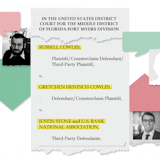Text_Body: Take it from a Minnesota historian: An occasionally strained but functional alliance between city and country folk is at the core of Minnesota's success story.
In fact, take it from two – neither of them a journalist who dabbles in Minnesota history on the side. To make this important point, I enlisted two pros: professor emeritus Hy Berman of the University of Minnesota and professor emerita Annette Atkins of Saint John's University and the College of Saint Benedict.
A good portion of Atkins' work has examined Minnesota's founding decades in the 19th century. Berman's work has focused on the Iron Range, the Twin Cities and labor history in the 20th century.
From those two vantages, they've come to the same conclusion: Minnesota would not have emerged in the second half of the 20th century as a leader among Midwestern states without a durable economic and political partnership between urban and rural Minnesotans. The synergy of city and country in this state produced something greater than the sum of its parts.
To that, I'll venture a conclusion of my own: A metro/Greater Minnesota rift spells trouble for Minnesota's future.
To buttress these claims, Atkins begins at Minnesota's beginning.
"We tend to think of settlement happening with farmers breaking the frontier and towns following. In fact, the towns came first. There was a St. Paul and Stillwater before there was a rural Minnesota. There's a way in which urban people set the agenda, always, for this area."
The myth of the lone pioneer in his covered wagon choosing a homestead on the prairie is just that – a myth. Most of Minnesota was settled by recruited groups in a coordinated way, Atkins said, with a lot of the recruitment and coordination happening in St. Paul and Minneapolis.


